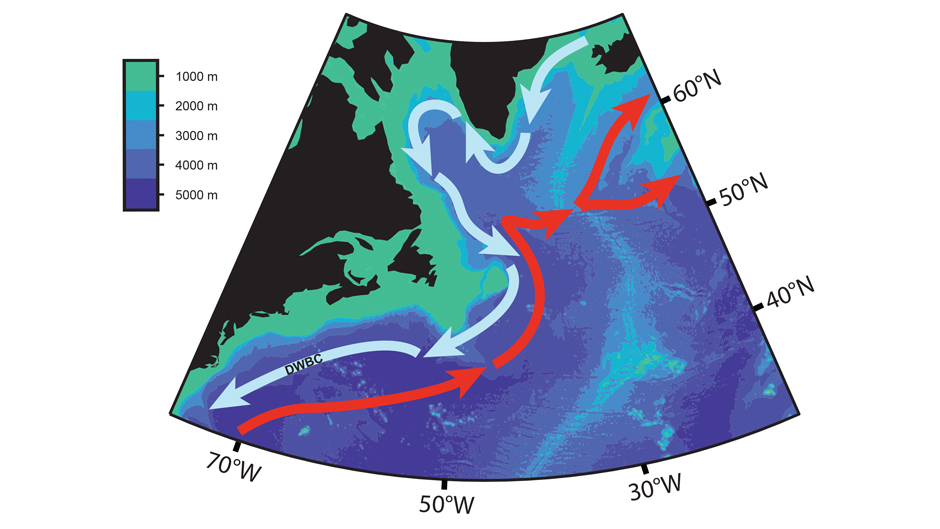A new study led by scientists at the University of Miami Rosenstiel School of Marine, Atmospheric, and Earth Science may offer a ray of hope in an otherwise dire climate picture.
As part of a larger international research collaboration, the UM Rosenstiel School researchers looked at a key process in the ocean known as the Atlantic Meridional Overturning Circulation, or AMOC. Scientists believe the AMOC may be slowing, which would signal a critical climate tipping point that must be avoided.
The AMOC is the ocean process where warm, salty surface waters in the North Atlantic are cooled as they move northward to the Arctic and ultimately form cold currents near the seafloor that return southward. This process relieves the tropics of excess ocean heat, which helps reduce the intensity of Atlantic hurricanes while also keeping places like western Europe more temperate.
The UM Rosenstiel School researchers found that nearly half of the AMOC unexpectedly occurs in a relatively small region in the northeastern part of the North Atlantic ocean, specifically in the Iceland Basin to the east of the Mid-Atlantic Ridge and south of Iceland.
“This is relatively good news in the larger, more dire climate picture,” said Greg Koman, Ph.D., lead author of the study and an alumnus of the Rosenstiel School. “It may mean that the AMOC is less sensitive to the effects of Greenland’s glacial meltwater than current climate models predict, since the dominant formation region of the deep waters is occurring farther from Greenland.”
As the Greenland ice sheet melts, the influx of freshwater will mix with the salty surface waters of the North Atlantic, making the water less dense, which may inhibit the water from sinking and thus could slow, or stop, the AMOC. If the AMOC slows down, or collapses, climate models show that it will have dramatic consequences for global climate.
“The paper produced a truly stunning result,” said Bill Johns, a professor in the Department of Ocean Sciences and co-author of the study. “Together with other research coming out of the Overturning Subpolar North Atlantic Program (OSNAP), it is changing our paradigm of how and where the deep waters of the AMOC are formed and how the AMOC may respond to both short and long-term climate change.”
This research is part of the Overturning in the Subpolar North Atlantic Program, which is an international collaboration to study the Atlantic Meridional Overturning Circulation, primarily through moorings across the entire northern Atlantic Ocean.
The study, titled “Circulation and overturning in the eastern North Atlantic subpolar gyre,” is currently available online in the journal Progress in Oceanography and is part of the November 2022 edition.
The study’s authors include: Greg Koman, William Johns, Adam Houk, University of Miami Rosenstiel School of Marine, Atmospheric, and Earth Science, Loic Houpert, National Oceanography Centre, Southhampton, UK and Feili Li, Xiamen University, Fujian, China.
Funding was provided by National Science Foundation grants OCE-1259398 and OCE-1756231

